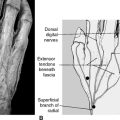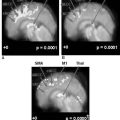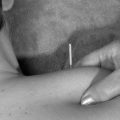CHAPTER 12 Systemic Pain–Related Disorders
This chapter discusses a variety of pain symptoms that are encountered in an acupuncture clinic but have not been addressed in previous chapters. The treatment protocol is presented at the end of the chapter.
HEADACHE
General Pathology
A headache is considered chronic if it cannot be relieved or improved after 6 months.
The tension headache responds very well to acupuncture treatments, and the Integrative Neuromuscular Acupoint System (INMAS) protocol proves to be very effective. As discussed in Chapter 3, muscle tension usually changes the homeostatic acupoints (HAs) from the latent phase to the passive phase, making them tender, and INMAS helps to locate these tender points. Locally, the process of needling tender points and the resulting needle-induced lesions effectively relax both superficial and deep muscles all over the body and restore their normal blood and oxygen supply. Systemically, needle-induced neurochemical substances such as endorphins are secreted into the blood stream and cause the relaxation of skeletal and smooth muscles as well as of other systems such as the cardiovascular system, thus normalizing the blood pressure. This combination of local and systemic effects brings about relief of tension headaches.
The underlying cause of migraine headaches is believed to be neurotransmitters, the communicating chemicals within the nervous system. Migraine headaches usually occur as moderate or severe pain on one side of the head, often accompanied by nausea or transient visual disturbance, intolerance to light or sound, or rainbow-like colors called aura in the field of vision. The incidence of migraine headaches is higher in females than in males. One of the reasons for the gender difference is that many female patients experience migraine just before or during their menstrual period, possibly due to fluctuation in the level of female hormones. Patients with a migraine headache may feel tightened scalp muscles just as do patients with a tension headache.
TRIGEMINAL NEURALGIA (TIC DOULOUREUX)
Treatment Protocol
The efficacy of acupuncture in treating trigeminal neuralgia depends on the severity of the condition and the patient’s health. The quantitative evaluation described in Chapter 6 provides a reliable method to predict the result of the treatment. Acupuncture therapy is effective or helpful for patients in groups A, B, and C. Little or no success can be expected with group D patients.
SHINGLES (HERPES ZOSTER) AND PAIN AFTER SHINGLES (POSTHERPETIC NEURALGIA)
Treatment Protocol
Please note that the infection is limited to the dermatome area of the infected spinal nerve(s), so practitioners need to be familiar with the segmental dermatome distribution of the spinal nerves. For example, the breast and nipple area is the dermatome of T4 and the umbilicus is in dermatome T10. The affected area is usually limited to one side of the body and occupies two neighboring dermatomes. For instance, if the infected skin is just below the nipple, it is the dermatome T5 or T6 or both.
COMPLEX REGIONAL PAIN SYNDROME
Complex regional pain syndrome (CRPS) has puzzled clinicians and pain scientists more than any other pain condition. The name itself reflects our incomplete understanding of this disorder. It was first described by Civil War surgeons Mitchell, Morehouse, and Kane in 1864.1 Currently, medical professionals believe that CRPS is caused by some kind of nerve injuries.
In Box 12-1, Dr. Sanjay Gupta suggests the diagnostic criteria for CRPS.1
Box 12-1 Complex Regional Pain Syndrome
| Type I: RSD | Type II: Causalgia |
|---|---|
| Continuous pain, with a hypersensitivity to cold stimuli and nonpainful stimuli eliciting a pain response | Continuous pain, with a hypersensitivity to cold stimuli and nonpainful stimuli eliciting a pain response after a nerve injury, but not necessarily following the nerve distribution |
| Evidence of swelling and skin changes with a decrease in blood flow to the affected area | Evidence of swelling and skin changes with a decrease in blood flow to the affected area |
| Absence of a condition that otherwise explains the above symptoms | Absence of a condition that otherwise explains the above symptoms |
| An inciting event or cause may or may not be present | All three of the above must be present for this diagnosis |
The signs and symptoms presented by CRPS patients may include:
Acupuncture therapy can provide very effective relief to CRPS patients at stages I and II. Acupuncture needling relaxes the painful and tight muscles, which helps remove mechanical pressure on peripheral blood vessels. It also calms the sympathetic tone and increases parasympathetic activities, which help to improve peripheral blood circulation. This increased circulation provides more nutrition and oxygen and accelerates the evacuation of metabolic toxins that are retained in soft tissues. Needle-induced endorphins not only reduce pain but also relax the entire body and remove mental tension.






